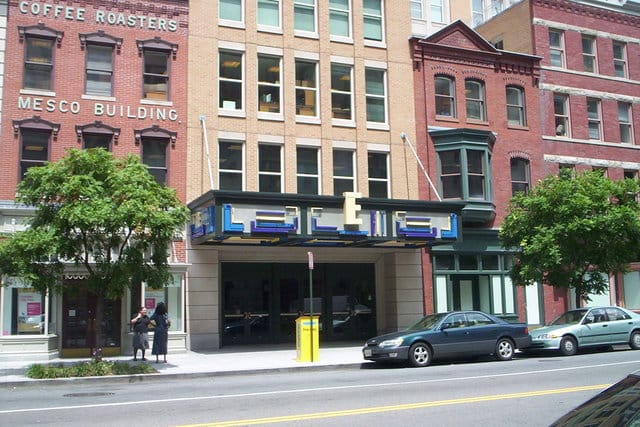
It is a time of mourning for Washingtonian cinephiles like me. E Street Cinema, the downtown movie theater that for more than 20 years has served as the go-to place for indie films in the District of Columbia, is shutting down this month, citing an inability to regain its audience following the pandemic. Just like that, the world of film in my hometown has grown measurably thinner. E Street is not alone. At the start of the pandemic, the Uptown – an art deco movie palace in Cleveland Park that hosted the world premiere of 2001: A Space Odyssey – closed its doors. In London, the iconic Prince Charles Cinema is fighting for its life after taking on a new landlord. Last June, the beloved chain Alamo Drafthouse abruptly filed for bankruptcy and closed six locations. Now, the Uptown is in the early stages of a revival under new ownership, the Prince Charles is in ongoing negotiations with its landlord, and Alamo was bought by Sony Pictures, which reopened the locations after about two months of closure. But the trend is clear: movie theaters battling for survival. And when they do survive such scares, it often only happens when communities rally around them. So in addition to eulogizing E Street, I want to implore readers to rally around their local theaters. The worldwide community of film needs them, and they need your support.
D.C. has its multiplexes with huge IMAX screens. It has the AFI in Silver Spring with its 70mm projector and year-round programming of classic cinema, and it has the Avalon, the independent theater in Chevy Chase that has been operating for more than a century. But if you wanted to see a new arthouse release, or something made outside the English-speaking world, E Street was the place to go. The theater was literally underground: you would come in on the street level where the box office was and then immediately go down a flight of stairs to get to the screens. The walls of the stairwell were adorned with French-language posters for movies like Run Lola Run and Crouching Tiger, Hidden Dragon. There were eight screens, but none of the auditoriums were particularly grandiose. A typical one seated maybe 60 people, with the seats where you wouldn’t have to crane your neck back in order to see the screen being directly underneath the projection room. Often one of the auditoriums was showing whatever the latest popcorn release was, but those weren’t the kinds of movies you went to E Street for. You went for more indie fare, the kinds of movies that either wouldn’t reach the multiplexes or be scuttled out of them after one week. When I went to college in Oneida County, New York and the only theater remotely close to my campus was the eyesore Marquee Cinemas Orchard 14 in the endless strip mall of New Hartford, there were plenty of films I wanted to see that never found their way to a nearby screen. But I rested easy knowing that whenever I came back to D.C. on a break, E Street would have them for me. Like many indie theaters, E Street was a regular exhibitor of midnight screenings of The Room and The Rocky Horror Picture Show. It provided screens for several local film festivals. Among the best films I saw over the years at E Street: La La Land, Jojo Rabbit, The Banshees of Inisherin. The last one I saw there was Flow, just a few weeks ago. E Street wasn’t just a place where I saw movies. It was a place that added color and depth to my journeys through the world of film.
This post is for subscribers only
Subscribe now and have access to all our stories, enjoy exclusive content and stay up to date with constant updates.
Already a member? Sign in
